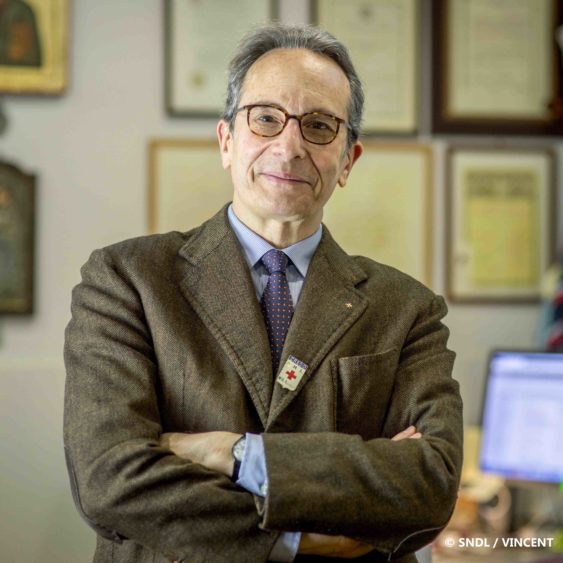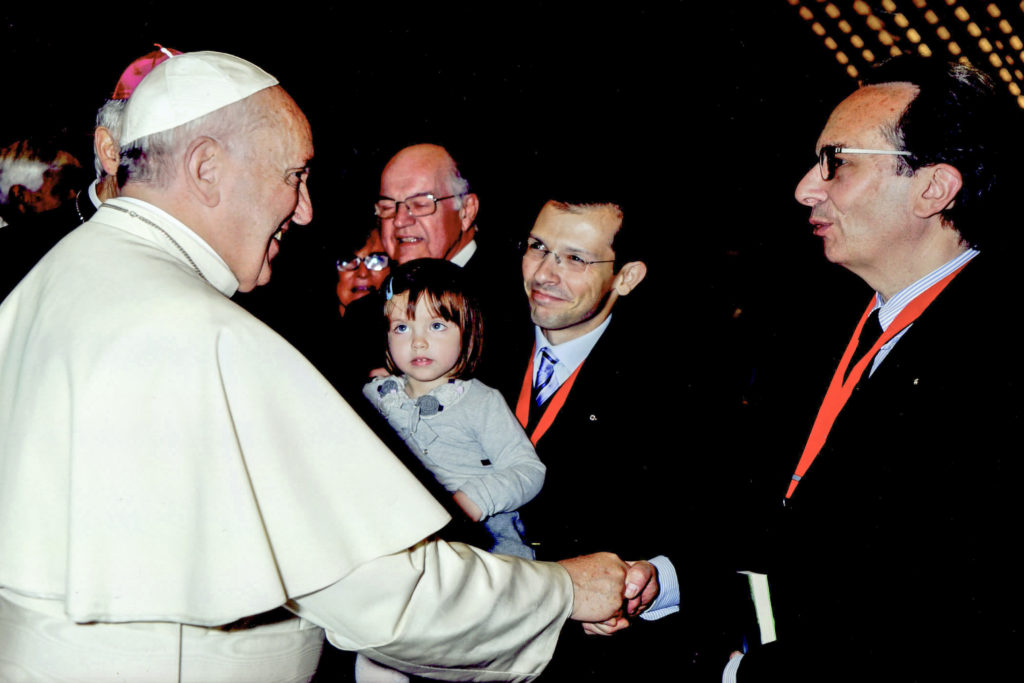Behind the miracles at #Lourdes
Mixing faith and science: Behind the miracles at Lourdes
On occasion, pilgrims visiting the Sanctuary of Our Lady of Lourdes wish to attest that they might have been miraculously cured.
Since the apparitions at Lourdes of the Immaculate Conception to Bernadette Soubirous in 1858, Lourdes has dealt with thousands of cases involving unexplained cures.
Pilgrims wishing to bear witness approach the Bureau des Constatations Médicales (Bureau of Medical Observations) in the Sanctuary, but what happens next?
During a recent visit to Lourdes, The Record Content Producer, Joshua Low, sat down with Dr Alessandro de Franciscis, President of both the Bureau of Medical Observations and International Lourdes Medical Association, to find out more about the work that goes on behind the scenes for the investigation of miracles at the sanctuary.
The first non-French President of the Bureau, Dr de Franciscis has now been in charge for some 11 years, having begun coming to Lourdes as a volunteer from the age of 17.
“I thought I knew Lourdes pretty well, but I’ve discovered a completely different aspect being THE doctor at the sanctuary.
“And I like to say I’m the only doctor that people don’t actually need, because they only come to me when they’re cured,” Dr de Franciscis joked.
“But I’ve been very privileged and the most interesting and emotionally impacting part of my work is listening to very intimate and personal accounts of lives and stories that have changed completely because of Lourdes.
“Sometimes I’m asked by others what the most spectacular cure or beautiful thing that has happened at Lourdes is, but I actually think the most spectacular thing here is meeting other human beings from different cultures and continents, with different languages and discovering that because of the bounty of Our Lady of Lourdes, their lives, independently of the cure, have radically changed.
“Because it is here at Lourdes where they discovered the maternal love of Mary the Mother of Jesus,” he said.
Dr de Franciscis opened up about the practical aspects of his work, beginning with the history of the Bureau, explaining that the office of medical observation was established in 1883 by Dr Georges-Fernand Dunot de Saint-Maclou, at the request of the first Rector of the Sanctuary, Fr Rémi Sempé.
“About 20 years after the recognition of the apparitions and first seven miraculous cures, the number of sick people claiming to have been cured because of Lourdes was growing.
“The Bureau was founded on the idea of turning to medicine, and asking physicians for their medical judgement and evaluation before even beginning any religious and canonical evaluation of a miracle,” Dr de Franciscis said.
“In 2019, we received more than 4000 medical professionals who spent some time in Lourdes and informed us that they were willing to collaborate in the study, discussions and amendments of files of alleged cures.
“With this method of collegial study, we have studied around 7500 cases from the foundation of the Bureau, using, from the year 1905, the same method as the Roman Congregation of the Causes of the Saints,” he added.
“That is, the seven criteria formulated by then Cardinal Lambertini, Archbishop of Bologna – later Pope Benedict XIV – in his important work known as De Servorum Dei Beatificatione et Beatorum Canonizatione (On the Beatification of the Servants of God and the Canonisation of Blessed) which also describes the ways to recognise a cure as potentially miraculous.”
Dr de Franciscis explained the seven criteria and how strict the investigation process is.
“The first two criteria relate to the disease. For us it is absolutely mandatory that we are in front of a disease that we have described; that we have a sure diagnosis, and secondly a severe prognosis.
“Four criteria are related to the cure. The cure must have happened in an unexpected way with no premonitory signs, in an instantaneous way, in a complete way and in a lasting way,” he said.
“Finally we have a seventh and last criterion. If we have all of the above – is there any possible medical explanation for the cure?
“In some cases, we do find an explanation, like with the enormous number of people who come claiming a cure from cancer, before we discover they have had some form of treatment by immunotherapy, chemotherapy, radiotherapy and so forth,” he said.
“But there are other rare cases in which we can arrive to define a cure as being unexplainable according to current medical knowledge; basically what we call in academic medicine, the spontaneous regression of a severe disease, where we are certain the person had been sick of a known disease and has been cured in a way we have no explanation for.
“It’s not to say all other cures and healings that take place cannot be miracles, but for a healing to be officially declared miraculous, absolutely all possible scientific explanations must be excluded.
“This is more or less the way we work – with this method, thousands of cases have been studied and 63 more cases were then recognised as being miraculous, together with the first 7 recognised by the bishop at the time of the apparitions, with the last one being on February 11 2018, to bring a total of 70 cases officially declared as miraculous.
Dr de Franciscis hopes the importance of this place may inspire more people to experience the healing found in Lourdes.
“I think we have a great need in the Christian community and in the Catholic Church to rediscover the relevance of the experience of suffering diseases, and of the comfort and support our Christian faith can give to that,” he said.
“In my experience, we are somehow forgetting the powerful mediation that Jesus can give, and the importance of sacraments like the Anointing of the Sick; so I believe Lourdes is still very much here to teach, and that it could remain a place in which sick pilgrims feel welcomed as the guests of honour.
“Lourdes remains in the Catholic Church to this day, THE place of healing.”
Avviso: Le pubblicità che appaiono in pagina sono gestite automaticamente da Google e sono necessarie a poter mantenere gratuite queste pagine. Pur avendo messo tutti i filtri necessari, potrebbe capitare di trovare qualche banner che desta perplessità. Nel caso, anche se non dipende dalla nostra volontà, ce ne scusiamo con i lettori.






